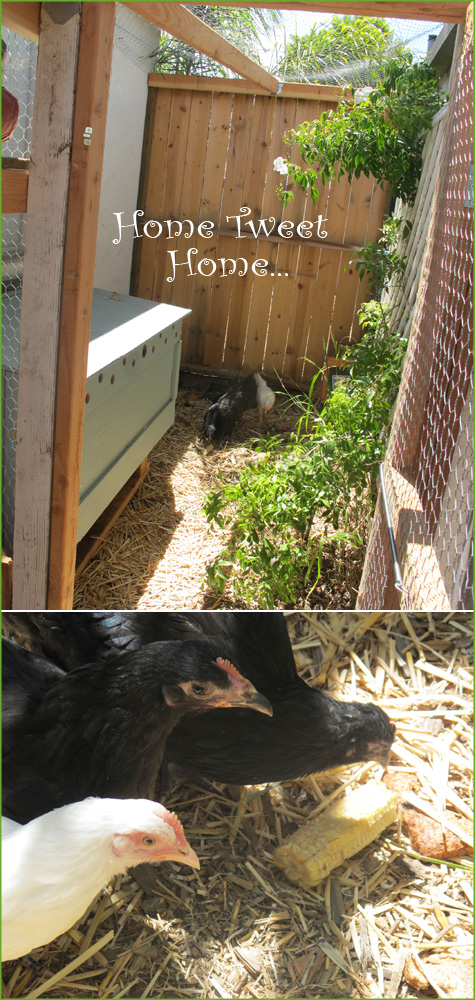
We welcomed a new batch of ‘pets’ to the home just this past weekend… we are now the proud owners of three lovely little hens! I know what you’re thinking, and yes, it’s a little crazy – especially since we live in the heart of suburban San Diego with pretty much zero backyard space.
But in our continued effort to go green and sustainable, we couldn’t help but entertain the idea of adding delicious, organic, properly fed, no pesticide, free range eggs to the mix.
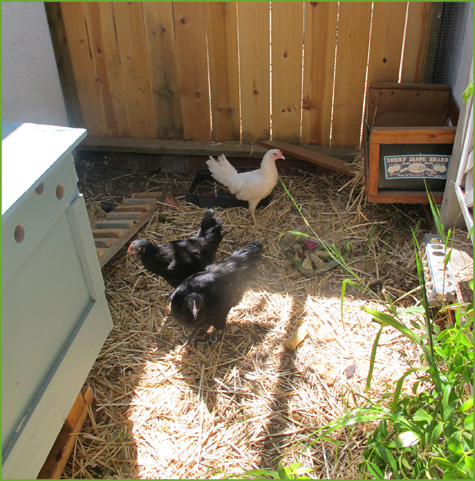
Currently, we support our local farmers by participating in Community Supported Agriculture, a neat concept that includes paying a quarterly growing fee and picking up a huge box every other week stock full of seasonal fruits & veggies fresh from a farm within thirty miles of our home. Best part? They deliver to our neighborhood, so we literally drive five blocks south to grab our treats. It’s organic, it’s sustainable, it’s cheaper than the super market and it’s de-licious.
CSA’s are located all over the US, check out this link to learn more. If you’re from San Diego, here’s the link to our local ranch though there are many to choose from. Of course farmer’s markets are a great option, too!
But back to the chickens…
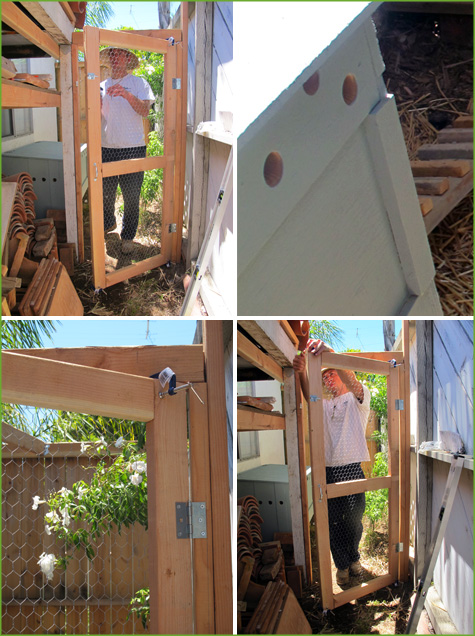
A couple of months ago we decided it was time to build a coop. After much research learning everything we could about ordinances around ‘city chickens’, asking our neighbors kindly for their opinion, and of course, hunting down what every chicken farmer needs to know… Kevin created the perfect little hen home in an 8×10′ area of space between our fence and house.
Chicken farming goes something like this…
1. Protect little chicks from any predators (chicken wire above, below, on all sides and buried in the ground)
2. Offer chicks a warm, cozy and well-ventilated home to nest in (see big blue box)
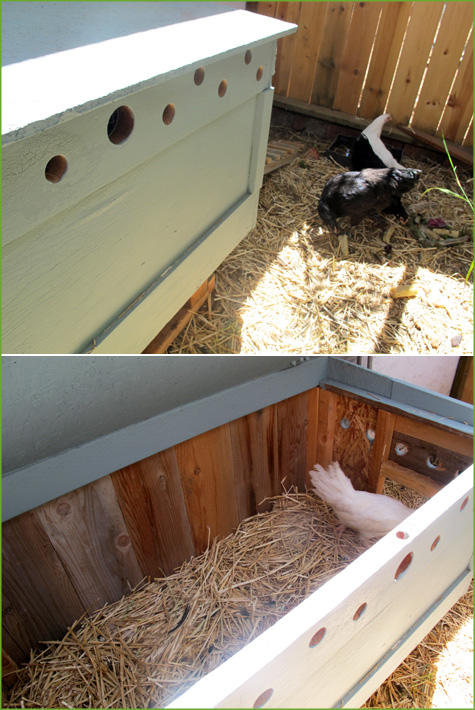
3. Find a comfortable spot for chicks to roost on (sleeping when not nesting – and this old peach box plus a few 2x4s did just the trick)
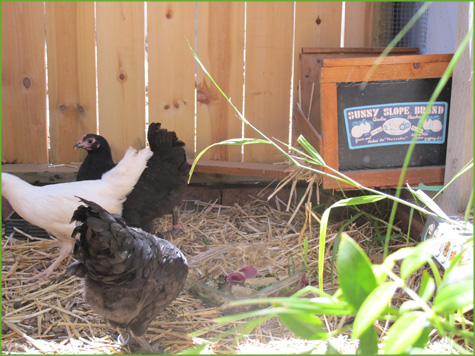
4. Add plenty of delicious and nutritious food to their diet – in addition to the usual seed and mash prescribed by the local feed store (local = well out of town), we add watermelon rinds, corn cob and really any other kitchen scraps that are healthy for them to peck at. And they LOVE it.
5. A clean environment equals a happy hen! I’m proud to say that after just five short days these chickens are not smelly and are not noisy in the least. You’d never know they were there.
In six short weeks we should have our first round of eggs! We opted for five month old hens as this allows us to make sure we actually bought hens and not roosters (neighbors would not love us if we did) and gives them enough time to acclimate to their new environment before they are old enough to produce.
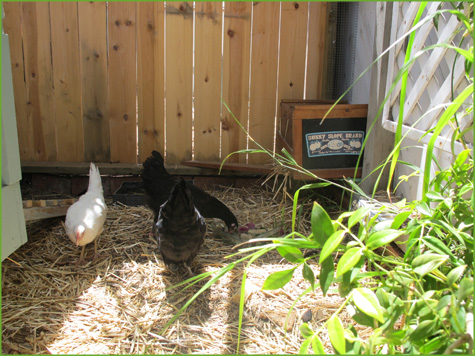
So, you might ask, is it worth it?
We’ll get one egg each day from each lady (if all goes well) and that works out to be an abundance of eggs for a reasonably low price. Chicken feed is a bit pricey (roughly the cost of a dozen store-bought eggs each week) and given the overall upkeep, it’s probably a labor of love that is best saved for those who don’t mind a few extra pets around the house.
But I’m definitely excited to see how it goes!







